Myrtle – care at home
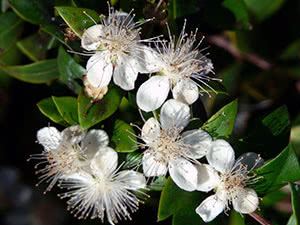 Myrtle plant (lat. Myrtus) belongs to the genus of evergreen woody plants of Myrtaceae family the flowers of which contain essential oil. Myrtle natural habitats are the Mediterranean, the Azores and the north of the African continent. It is not coincidence that the plant’s name sounds practically the same as the Greek word "myrrh" meaning "balm, liquid incense", because myrtle essential oil has long been used as cult attribute in the temples of various concessions. The legend has it that expelled from Eden Adam brought a myrtle flower to the Earth as the memory of a lost paradise. In different cultures this plant is connected with a lot of myths, beliefs, traditions, rituals, and signs.
Myrtle plant (lat. Myrtus) belongs to the genus of evergreen woody plants of Myrtaceae family the flowers of which contain essential oil. Myrtle natural habitats are the Mediterranean, the Azores and the north of the African continent. It is not coincidence that the plant’s name sounds practically the same as the Greek word "myrrh" meaning "balm, liquid incense", because myrtle essential oil has long been used as cult attribute in the temples of various concessions. The legend has it that expelled from Eden Adam brought a myrtle flower to the Earth as the memory of a lost paradise. In different cultures this plant is connected with a lot of myths, beliefs, traditions, rituals, and signs.
Myrtle tree has long been considered as a symbol of glory, peace and hope. Our ancestors used myrtle flowers not only for religious but also for medical and cosmetic purposes, some myrtle products are still popular today. But for plant lovers blooming and fragrant myrtle is the subject of admiration and a source of aesthetic pleasure.
Moreover houseplant myrtle is an undemanding plant, and the one who knows how to care for Myrtle will easily achieve optimum shape of the plant that will decorate your home and help you save your health.
Description of myrtle
According to various sources, myrtle numbers from forty to one hundred species in areas of its natural habitat and it can grow up to 10 feet high, while the houseplant myrtle growing under the most favorable conditions reaches only 3 feet. Usually, myrtle at home is a tree with a round crown of 12-24 inches tall. Small, leathery, polished, elongated myrtle leaves are arranged on the shoots rarely, alternatingly and oppositely on short leafstalks. The tops of the leaves are sharp. Single and polypetalous flowers are collected in the brush. The fruit is a nut or berry drupe. An interesting fact is that such valuable for mankind plants as tea tree, eucalyptus, clove tree belong to Myrtaceae family.
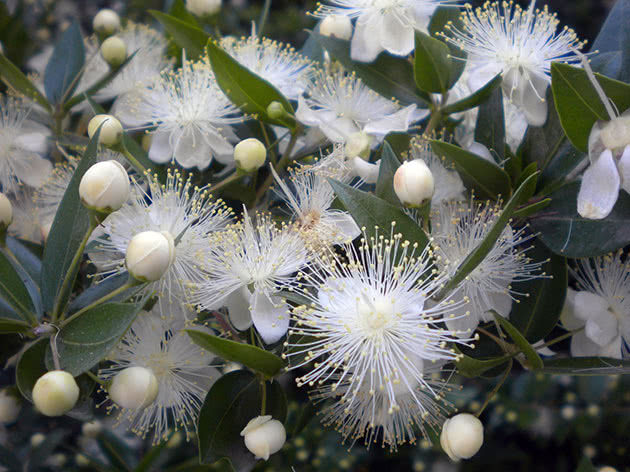
Myrtle flower growing from the seed
How to propagate the myrtle at home? In early spring myrtle seeds are sown on the surface of the substrate, consisting of equal parts of peat and sand, in a container 3-4 inches deep, sprinkled by a layer of the same substrate in a thickness of 0.2 inch. While being covered with glass, it should be kept at a temperature of about 68ºF, airing and moistening seedings, as well as removing the condensation from the glass. Shoots appear within a week or two. When the seedlings have 2-3 true leaves, they are singled in individual pots so that the root collar remains above the ground. In a month the seedling are fertilized by weak nitrogen. However the plant breeders should know that myrtle grown from seeds:
- will bloom not earlier than in 4-5 years;
- is unlikely to preserve the varietal qualities.
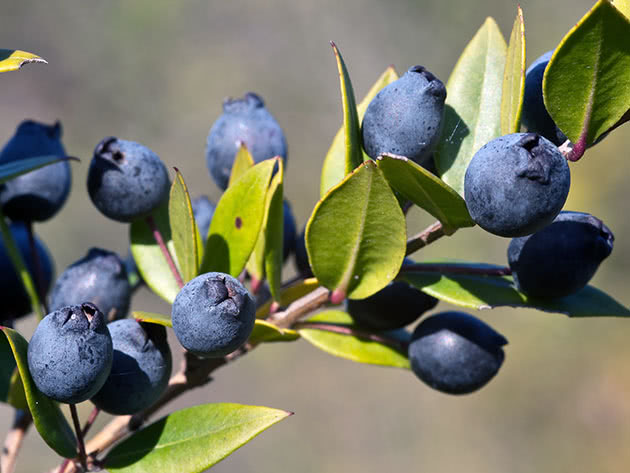
In addition, myrtle seed germination will sharply get lower after a year of storage, and it is problematic to get them as it requires artificial pollination of plants.
Care for myrtle at home
How to grow myrtle at home
Care for myrtle at home includes watering, fertilizing and pruning, as well as creating the best, or, at least, necessary conditions. Houseplant myrtle prefers the southern, western and eastern windowsills. It is not sensible to drafts, temperature changes and direct sunlight. Moreover, the myrtle does not bloom without sunlight. In summer myrtle prefers open air. In winter the plant needs cool temperature at 41-50 ºF, and the best place is unheated glazed balcony.
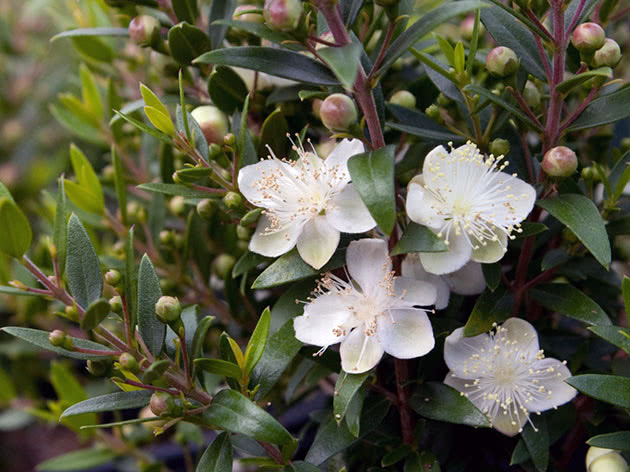
You should water myrtle abundantly and frequently during warmer months, without letting the upper layer get dried out, but excess moisture must be drained away from the tray not to cause a root rot. Lack of or rare watering may cause the plant to drop the leaves. With cold weather coming you should reduce watering, but if the plant winters in a room with a heater, you should water it as frequently as in summer. Besides, it will be necessary to mist plant leaves with water at least once a day, as myrtle likes high humidity. It should be done in summer and in winter when temperature in the room is above 59 ºF. Water for spraying and irrigation must be sedimented and passed through the filter.

Myrtle needs additional fertilizing once a week or two from March to August. If you grow myrtle bonsai tree or you are not interested in its flowering, you should feed the plant with complex fertilizer for ornamental-deciduous plants, but if you want to see the myrtle flowering, then you should use fertilizer for flowering plants.
Myrtle has clearly distinguished dormant period, the duration of which is determined by the location of the plant. If in winter myrtle is on the north windowsill, then it can rest up to three months, and if it is in a warm place with bright light, the dormant period lasts only one and a half months.

Myrtle pruning
Care for myrtle means making its crone of a desirable shape. The shape of myrtle depends on the reason you grow it. Many people like the myrtle in the form of stam tree with a neat compact crown, but there are people who do not care how the plant looks like and they need it just for blooming and smelling. In any case, it is better to avoid excessive pruning or removing the tops of lateral shoots of young plants. On the other hand, the myrtle grows quickly and gets easily restored, and you always have the opportunity to change your plans about its look.
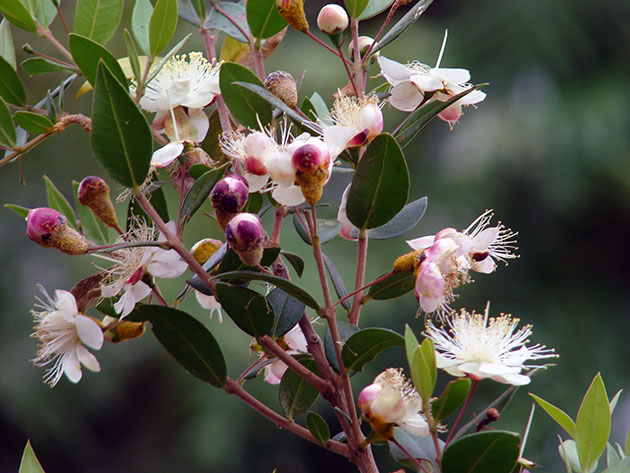
Replanting of houseplant myrtle
Young seedlings are replanted each year. Mature myrtles are replanted when watered soil gets dry during the day. It means that you should increase the amount of substrate and the size of the flowerpot. A new pot should be only one inch wider in diameter than the previous one. It is better to do replanting in spring by transferring the plant from the old pot to the new one as this method does not to injure the root system.
Myrtle propagation
If you want to propagate myrtle and preserve the species and varietal qualities of the plant, then the best method is a propagation by cuttings. In addition, it is much more reliable way of plant breeding than by seeding. The plants grown from the cuttings start blooming 3 years earlier than those received from seeds. Therefore, if you want to grow a myrtle tree, there is no need to buy seeds that quickly lose their ability to germinate, just ask your friends to share with cuttings that are usually left after pruning. Semilignified cuttings of the current year show the best result. Cuttings can be taken from January to February, or in July, and it is better if they are from the lower or middle part of the crown. Remove lower leaves from the shoot 3-4 inches long, shorten the upper leaves by one-third, and shorten the largest leaves by a half. Process the lower cut with root-growth stimulant or by heteroauxin and plant into a mixture of leaf soil (one part) and coarse sand (one half), or a mixture of peat moss and sand in the same proportions. The container for rooting should be low and wide, and the cutting should be covered with the glass jar. The cutting roots best when it is placed in shaded place at the temperature of 63-68 ºF. From time to time the jar should be removed for airing and for the soil not to turn sour. Usually, the roots appear within a month, and rooted cutting is planted into the pot 3 inches in diameter with the same soil mixture. In a year it can be planted into the flower pot 3 ½ inches in diameter and maintained as a mature plant.
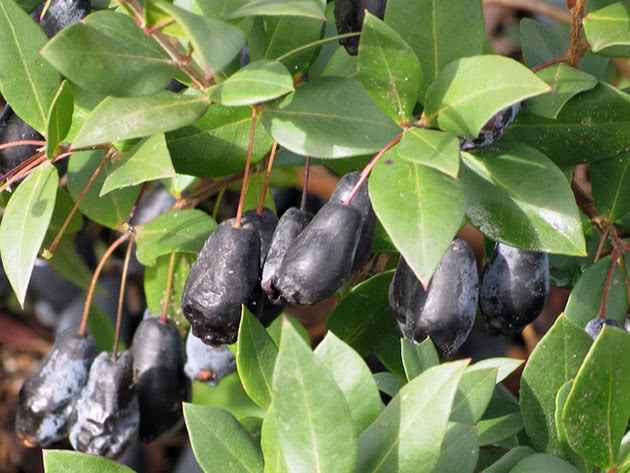
Pests and diseases of myrtle
Insects and diseases of myrtle
Myrtle can be attacked by mealybug, whitefly, scale insects, aphids, thrips and spider mites that occur as a result of constant violation of the rules of plants maintenance. You can use insecticides to get rid of the first five pests. If the plant is attacked by spider mite and thrips, it should be washed before being processed with insecticides. But before using insecticides, it is advisable to control the insects and keep simple rules of plants maintenance.
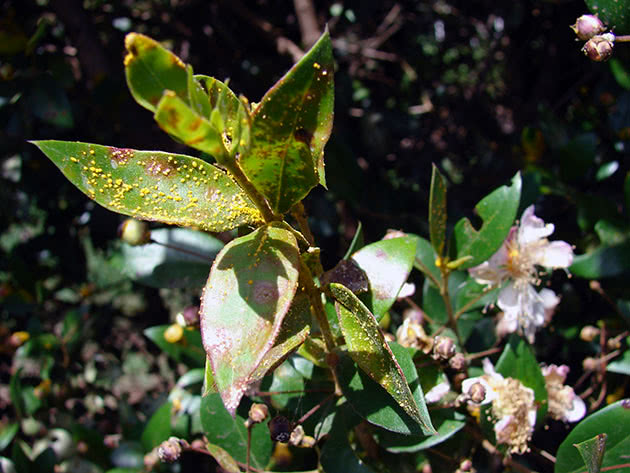
Myrtle dried out
It is the most frequently asked question of our readers. Instead of asking “what to do if myrtle has dried out?” you should ask “what to do not to let the myrtle dry out?” The answer on this question is very simple: strictly keep the rules of myrtle maintenance. If myrtle leaves wither, then you fail some plant care recommendation. Insufficient humidity has adverse effect on the foliage especially if in winter myrtle is in the room with a temperature above 64 ºF and with the heaters drying out the air. Myrtle dries up if you forget to water it. Please remember the plant care rules and keep them strictly as it is far easier to prevent plant death taking preventive measure than to bring it back. Water and spray the myrtle regularly with sedimented water, keep it on the tray with wet pebbles, but do not let the bottom of the pot be in the water.

Myrtle qualities and signs
Myrtle qualities
The myrtle leaves, young shoots and fruits contain essential oil and active substances that have a high antibacterial quality. The scientists have developed a therapeutic drug called myrtle liqueur that is obtained from the leaves of mature plants. Traditional medicine and modern scientific research prove that the use of myrtle in the treatment of such serious diseases as diabetes, pneumonia and chronic bronchitis is highly effective. Myrtle liqueur successfully copes with antibiotic-resistant strains of the tubercle bacillus, staph infection, purulent otitis and heavy smoker's cough. In addition, the medicines obtained from myrtle leaves are natural boosters of important life processes, increase performance and endurance to stress. They have no side effects and are prescribed even to one year old kids. Doctors and botanists recommend keeping the myrtle in the bedrooms and nurseries since it makes air cleaner and healthier. One plant is able to clean the air from bacteria in a room of 24 square yards.
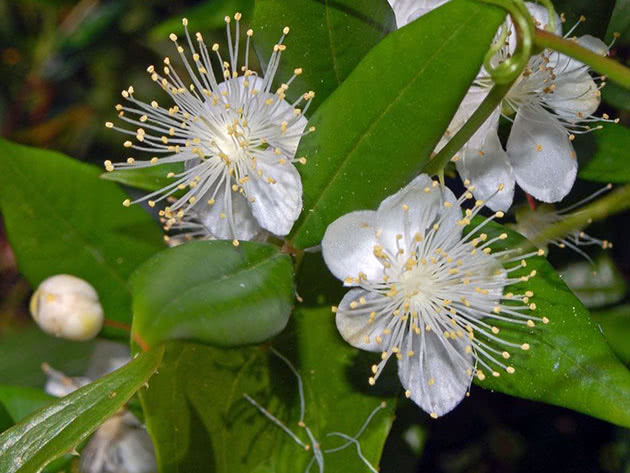
Myrtle signs
Myrtle has long been believed to be a strong talisman. But plant works only under two conditions:
- if it is planted by a woman that is a home owner;
- if the plant’s owner are proud of their myrtle.
In Europe countries it is believed that there will be peace and love in the house where the myrtle grows in. But if the plant dies and is thrown away, happiness will leave that house with a dead plant. Myrtle is not good choice for offices as it needs a family home.
Muslims do not hold myrtle at home believing that it condemns young boys and girls that live in this house to loneliness.
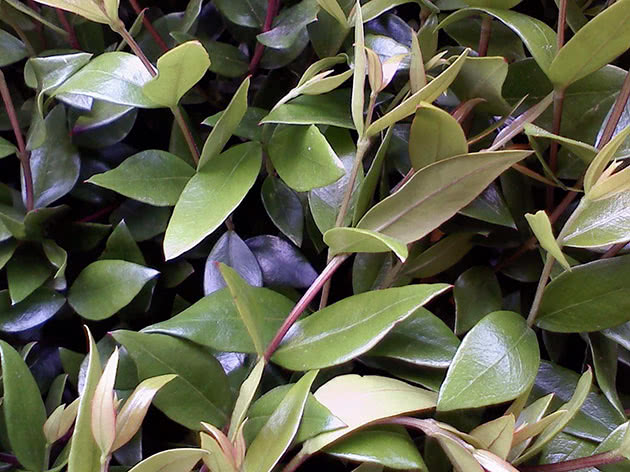
Myrtle species
Common myrtle (Myrtus communis)
Common myrtle (Myrtus communis) is the most popular in indoor floriculture. It has a short branched stem covered with peeling bark scales of reddish-brown color. The leaves are green, oval-lanceolate, glossy, leathery, with a pleasant fragrance. The flowers are white or pale pink with prominent stamens, its fruit is red and black berries. It blooms from June to August. "Tarentina" is a popular cultivar. It is a compact bush with berries smaller than the original species has; in variegated varieties the green leaves have creamy-white pattern.

Chilean myrtle
Myrtus apiculata is also known as Chilean myrtle. It is a shrub or small tree with brown bark that peels as the tree grows. The trunk has creamy white color. The leaves are dark green, elliptical, dull. White single flowers bloom in July and August, the black and red berries are edible.

White Chilean myrtle (Myrtus chequen)
is a tree that has shiny green leaves with a wrinkled edge. This kind of the myrtle is the most viable.
Ralph myrtle (Myrtus ralfii)
is an erect shrub with flowers of pinkish tint and red edible berries. It has a variegated variety with white and cream-colored border around the edge of the leaves.
